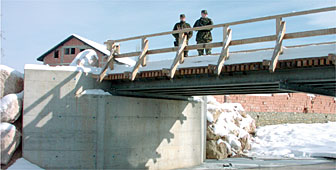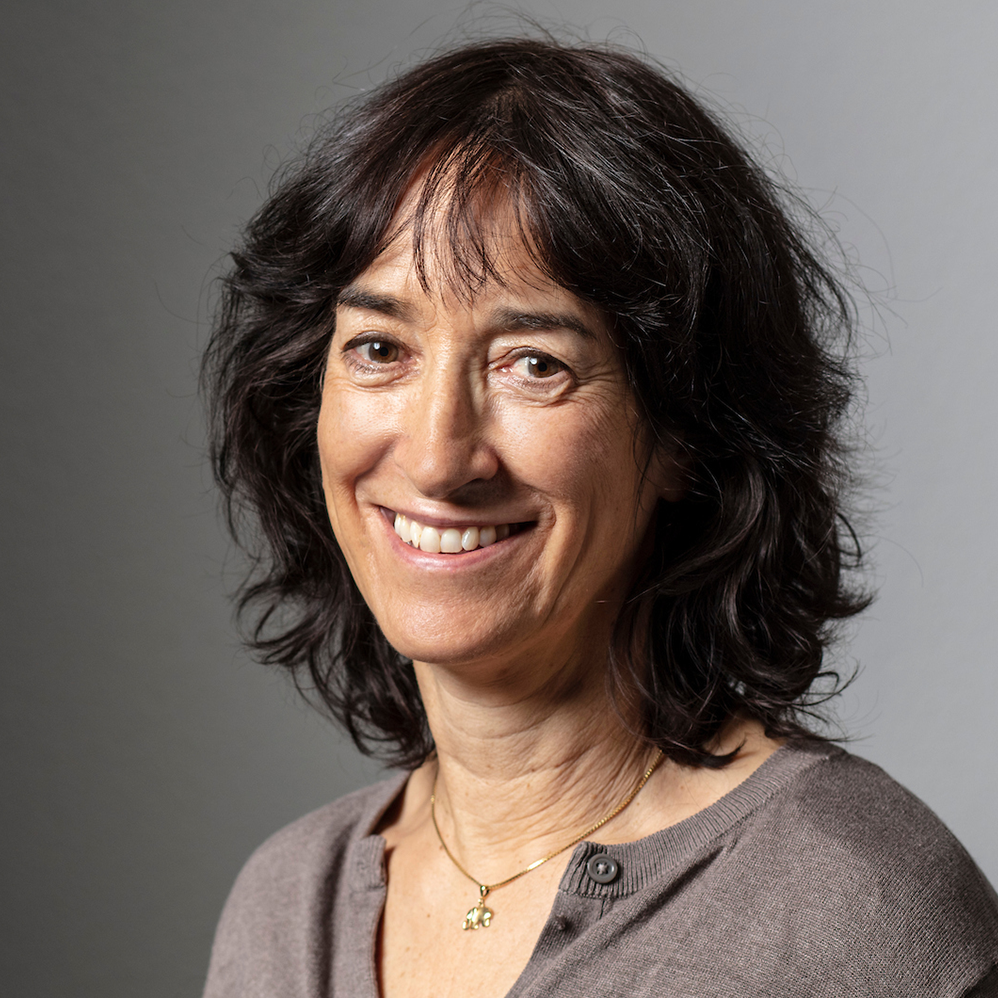Building bridges across Kosovo

Some of Switzerland's best engineers have been helping to rebuild Kosovo, a province left in ruins by the war in 1999.
Since the Swiss army contingent – called Swisscoy, for Swiss Company – began its mission in Kosovo in the same year, engineers belonging to the Pioneer platoon have completed 52 building projects on behalf of local communities.
The 30-40 Pioneers – all volunteers – include architects, statisticians, builders and carpenters, and are assisted seven local builders. The size of the platoon depends on the season and the number of projects underway.
The Pioneers live as soldiers and are subject to the discipline of army life at Camp Casablanca, but they work mostly outside the camp in the community. They are paid their normal civilian wages plus a daily allowance of €10 (SFr15).
“The Pioneers are not typical soldiers,” says chief engineer, Captain Daniel Wegrampf. “They come with some idealism and are proud of their civilian skills. They listen and try to do something.”
Setting up camp
Their first job was to construct Camp Casablanca for the Swiss, Austrian and Slovak soldiers deployed in province. Some 1,715 tons of building material, about 300 containers (for living quarters) and over 100 vehicles were brought into Kosovo and Macedonia by air, rail, road and sea. The deployment was completed as planned on October 8, 1999.
The soldiers live in air-conditioned containers, sleeping two per aluminium unit. The units are stacked on top of each other and have communal bathrooms, with hot showers and toilets connected to the general sewage system outside the camp.
When the Serbs pulled out of Kosovo, they left a trail of destruction in their wake. Locals say they left candles burning in houses, schools and municipal buildings, and turned on the gas. The resulting explosions normally destroyed the buildings.
By the end of 2000, the Swiss government’s development aid agency (SDC) had funded projects to the tune of SFr90 million ($54 million) for the rebuilding of houses and schools – work often carried out by the Pioneers. A further SFr71 million was given in humanitarian aid by the Swiss government.
Building bridges
Eleven bridges were constructed with SDC money. “Technische Hilfswerk”, the civilian division of the German federal army, also helped to fund four new bridges in western Kosovo. Typically a bridge costs about SFr80,000 ($49,000), including wages for the workers.
In collaboration with the Austrians and Slovaks, the Pioneers also constructed three school sports grounds for basketball, soccer and volleyball. This project was funded by South Brigade’s CIMIC or civilian assistance programme.
Captain Wegrampf proudly showed off the gleaming basketball hoops and goal posts on the snow covered playground of Shkendija primary and secondary school in Suva Reka. “It’s important to do these things for the children, as they are Kosovo’s hope for the future,” he said.
Kosovar Albanians spend a lot of time out on the streets in summer. This, and traffic, can cause severe congestion on the roads. The boom period of reconstruction, which has followed the war, has led to a large increase in the number of vehicles on badly maintained, bomb damaged highways.
In the town of Stimlje, it was proving difficult for KFor to carry out patrols so the Pioneers joined forces with the Finnish battalion to build a by-pass around the town.
Challenges
Building bridges across rivers poses particular challenges for the Pioneers. Stone needed for concrete and to shore up the river banks comes from local quarries, but the iron supports must be imported from Switzerland.
In summer the rivers dwindle to little more than a trickle, but by spring the melting snow turns them into torrents swelling them to many times their normal width.
The Pioneers also have to work quickly to allow KFor tanks, fire engines as well as local traffic to cross rivers. Although they are not bound by Swiss rules regarding the height and appearance of bridges, Swiss norms must be applied to the construction.
Bridges are built to carry the weight of a 60-ton tank. The concrete bridge supports last about 25 years, but the wood lasts only 10 years.
In the beginning, local people were stealing the wood intended for the bridges during construction but now, under Swisscoy’s civilian programme (CIMIK), wood is distributed to people who request it.
Risk of theft
This should help to reduce the risk of theft. The Pioneers have also persuaded local people to look after building materials during the night.
The Sopina Bridge near Suva Reka is a testament to the Pioneers’ work. Built in less than two months, and completed last September, its presence is a constant reminder of how things used to be.
“Before, this was just a pedestrian bridge, and the cars had to go through the river,” Captain Wegrampf told swissinfo. “Now it’s much faster and better, and I hope we could set an example to the local people of how to construct bridges in a fast and simple way.”
There are plans to set up training centres in Kosovo, where these building skills can be formally passed on by the Swiss.
The captain says he has had a good reception from the locals. “When I appear with the Swiss flag they shake hands and say hello and are very happy.”
Accidents
Maintenance checks are carried out on the newly constructed bridges every six months, and any necessary repairs carried out. It is not uncommon for cars to hit the side of a bridge, ending up in the river below. Locals needing wood still remove planks from time to time
In future, communities are to be asked to contribute one tenth of the cost of a bridge in their area. The cost and building work is the responsibility of the forces controlling a particular area, but sometimes the Pioneers are called in to lend a hand.
They recently assisted in the building of four bridges in the Italian sector, for example, after delays in Rome meant the Italians were not able to build the vitally important structures fast enough.
For the time being, bridge building is on hold. The Pioneers are now making a large roof for the Russian/German camp in Malisevo. This will tie up three people for two weeks at the camp workshop, after which five or six Pioneers will be sent to Malisevo to install the construction.
Soon they will start work on constructing a new Swiss restaurant at Camp Casablanca, for the beefed up Swiss Company. Up to 60 extra troops are due to arrive in autumn. The seventh Swiss contingent could comprise as many as 220 soldiers.
The word spread fast about the Pioneers’ building skills, and the team was much in demand last year.
Captain Wegrampf makes clear, though, that the reconstruction is a joint effort. “We can only do this with the support of the Austrians and the Germans, who make unexploded ordinance checks, for example. They have also guarded us, enabling us to do the specialist jobs for which we came here.”
Protection for the unarmed Pioneers is now provided by the Swiss Fortification Guards.
by Julie Hunt

In compliance with the JTI standards
More: SWI swissinfo.ch certified by the Journalism Trust Initiative

You can find an overview of ongoing debates with our journalists here. Please join us!
If you want to start a conversation about a topic raised in this article or want to report factual errors, email us at english@swissinfo.ch.